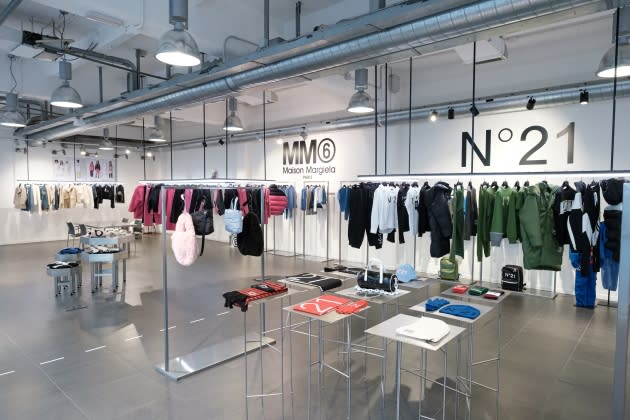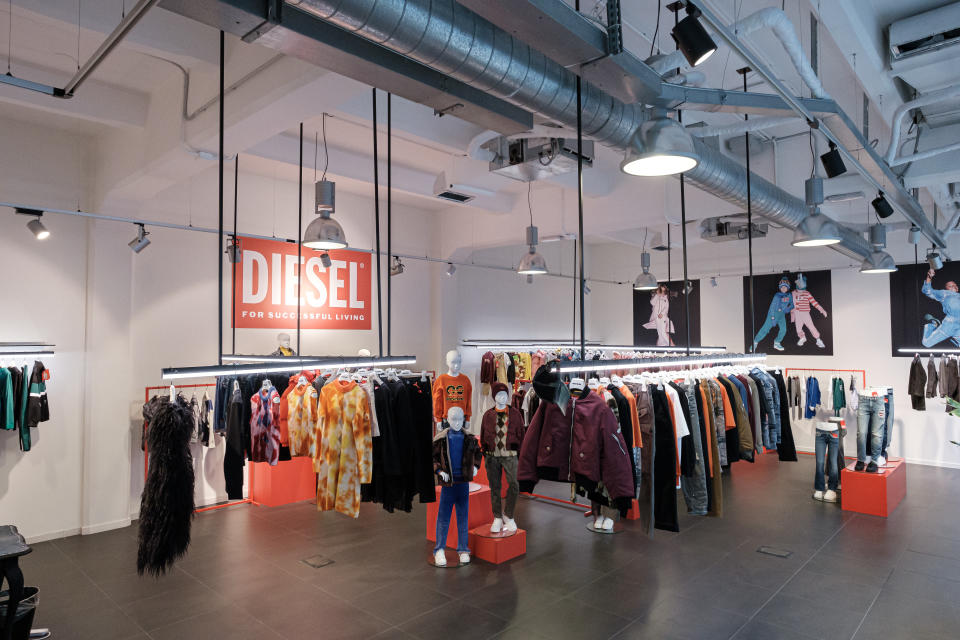Renzo Rosso on How OTB Is Building a Major Luxury Children’s Wear Operation

MAROSTICA, Italy — One may remember Renzo Rosso’s Dieselito line in the ’80s, which was Diesel’s children’s collection conceived by the brand’s founder for his own offspring.
“Moms just loved those mini-me Diesel clothes, also because back then the offer was either mass market looks or ceremony and occasion wear,” reminisced Rosso.
More from WWD
Dieselito was then named Diesel Kid and children’s wear specialist Brave Kid, controlled by Rosso’s OTB Group, stems from that initial desire to venture further into the segment. It has grown to produce several of the fashion group’s brands, including Diesel, Marni and MM6 Maison Margiela — the latest addition, which started with the fall 2021 collection.
Brave Kid, which is based in Marostica, about a one-hour drive from Venice, also produces children’s collections for Dsquared2, N.21 and MYAR, a line created by Rosso’s son Andrea with products that are entirely upcycled.
Germano Ferraro, Brave Kid’s chief executive officer, was formerly Diesel’s commercial director, recalled Rosso during an interview at the company’s headquarters here.
“Germano wanted to have his own entrepreneurial experience, so he became my partner with a 10 percent stake and, when in 2000 I bought Staff International, which had a nice portfolio of brands, the idea was to develop the children’s lines for those labels and we set up Brave Kid,” Rosso said. Staff International back then produced and distributed collections for the likes of Karl Lagerfeld and Emanuel Ungaro as well as Maison Margiela, among others.
Brave Kid has been growing steadily, with revenues increasing 25 percent in 2022 and expected to reach more than 70 million euros compared with the previous year. In 2021 sales rose 23 percent compared with 2020, according to Rosso.
Rosso underscored that Brave Kid interprets the creative vision of each brand’s designer and said he would like to add a children’s collection for Jil Sander, which OTB bought last year. “We are working on that, we’ve done some tests with cashmere [looks], we want to maintain the high range and I believe it will eventually happen,” said Rosso.
After taking on the N.21 collection, designed by Alessandro Dell’Acqua, he also did not rule out the arrival of other licenses, if they fit with the “homogeneous positioning with no overlapping” at the company. He also highlighted the increased contractual power Brave Kid has as a unique organization in Italy.
According to a report issued in June by Centro Studi di Confindustria Moda for association SMI Sistema Moda Italia, children’s wear revenues in 2021 closed up 15.5 percent to 3.05 billion euros. Exports represented 42.8 percent of total sales.
There is an increased demand for the development of children’s wear brands, Rosso said, in particular in the luxury range, citing more floors dedicated to kids’ wear in department stores and the growing mini-me trend. “Also, parents enjoy showing that their children wear specific brands they themselves appreciate for their values and aesthetics,” he mused.
Brave Kid produces 2 million garments a year, and the boys category represents 60 percent of sales, although Rosso noted that the Maison Margiela designs are genderless and that the unisex trend is growing.
Brave Kid has introduced a new automation system at its warehouse that allows shipments and deliveries of the collections to be much more efficient. This pilot project is expected to be replicated in other OTB warehouses.
A walk-through of the warehouse, which spans over 48,600 square feet and stocks around 900,000 pieces, is impressive, with its use of 22 robots and space optimization, as it is developed vertically up to the ceiling over 13 levels with reduced volumes.
The benefits include speedy training to use the system — in less than one hour an employee who is not specialized can learn all of its functions. Robots don’t need lights or heating, so the location absorbs the same energy as a household appliance. Operating through 24 hours, employees are granted safer conditions, said Rosso. Everything is integrated in an evolved software system that is able to measure the performance in real time and the productivity of operators has doubled.
The warehouse, which in November packed up around 190,000 pieces, employs 23 people, of whom 75 percent are women. “This is really an advanced and futuristic system,” enthused Rosso. Brave Kid counts a total of 120 employees, of whom 80 percent are women.
Starting with the fall 2023 season, the company is presenting the collections in a new showroom in Milan in Via Savona. It covers 10,800 square feet and was the former Staff International showroom, now entirely dedicated to Brave Kid and where each brand has its own exhibition space.
A dedicated online site was launched last year.
Italy, Japan, U.K. and South Korea are the main markets right now, but the U.S. is also growing steadily. Diesel represents 30 percent of Brave Kid’s sales, said Rosso.

Rosso predicted that the high-end range of the fashion industry will be able to better weather 2023, which will, however, be marked by rising costs, inflation, less wealth and more unemployment, and that some companies may close.
For OTB – which, in addition to Brave Kid, Staff International, the Diesel, Jil Sander, Maison Margiela, Marni and Viktor & Rolf brands, has a minority stake in Amiri – Rosso expects to continue to post double-digit growth in 2023, based on the orders for the year.
As reported, in 2021, OTB’s turnover, including royalties, totaled 1.53 billion euros (excluding nonrecurring revenues of 130 million euros), up 16.2 percent compared with 2020. Net sales totaled 1.45 billion euros, up 18 percent compared with 2020.
“We are serious, we deliver on time, we have credibility and we’ve strengthened our relationships with clients during COVID-19, so we have been seeing a positive return,” explained Rosso.
He admitted 2023 “could be a good year to bring home more acquisitions but those brands or companies must be in sync with the OTB philosophy. ‘What can we bring to the brand’ is the question I always ask myself.”
He confirmed the goal to publicly list OTB, possibly in 2024, as reported, but also depending on the markets. “We’ll do it for transparency and for succession reasons, but if the multiples are interesting because we have no need for cash, we can work with our own resources. I have set my objectives to our managers for the IPO, but I will not say what that revenue figure is. When that will be reached, it could be the end of 2024 or early 2025,” Rosso said.
Asked about working with the new prime minister, Giorgia Meloni, who succeeded Mario Draghi in October, Rosso had positive comments to share. “I think she has matured, she has a program and is endorsing it and she is acting responsibly, reconsidering her ideas if she understands they may not work. I am very confident,” said Rosso, who reiterated his praise for Draghi for “the prestige and consideration he brought to the country.”


